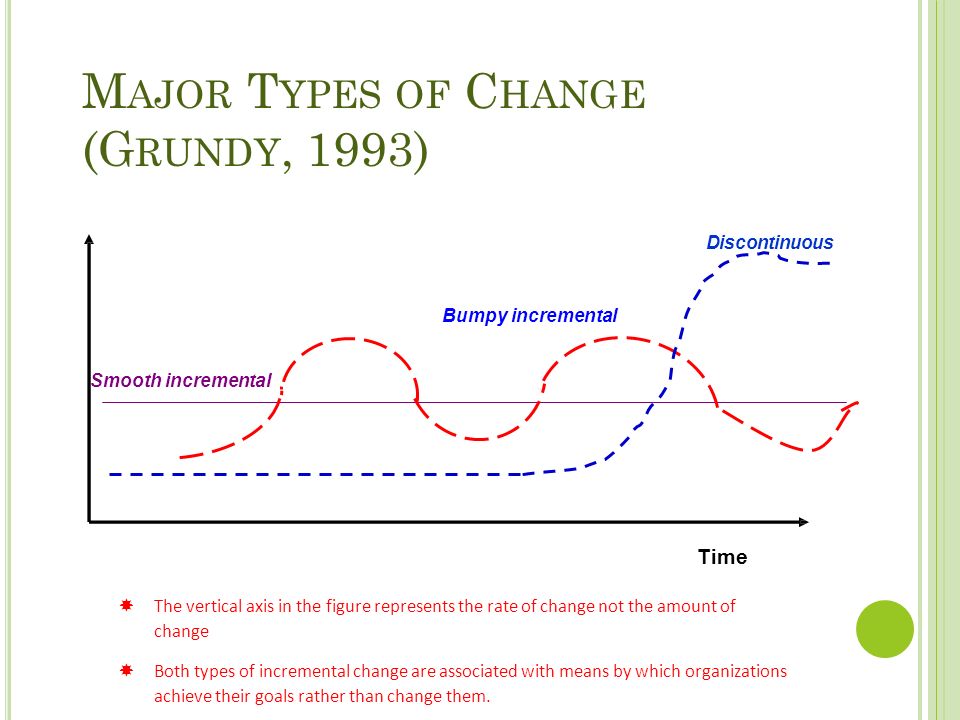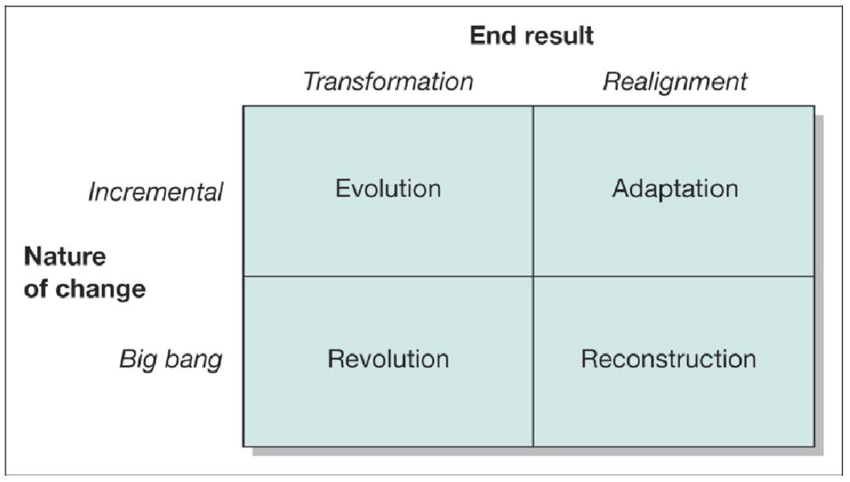Senior also describes three varieties of change as proposed by Grundy.
According to Grundy, organisations can experience:
- Smooth incremental change which is change that evolves slowly in a systematic and predictable way.
- Bumpy incremental change, which is characterised by periods of relative tranquillity punctuated by acceleration in the pace of change. Periodic readjustments are made in response to external and internal forces.
- Discontinuous change, which is change characterised by rapid shifts in strategy, structure or culture or in all three.

Many other models exist to explain the types and nature of change experienced by organisations. A “scale of change” by Dunphy & Stace is quoted by Senior as comprising of four scale types:
Type 1: Fine tuning, which refers to ongoing incremental changes to ensure a match between the organisation’s strategies, structure, people and processes;
Type 2: An incremental adjustment, which involves distinct modifications (not radical change) to corporate business strategies, structures and management processes;
Type 3: Modular transformation, which is characterised by major realignment of one or more departments or divisions; and
Type 4: Corporate transformation, which is change across the organisation characterised by radical shifts in business strategy, and revolutionary changes throughout the whole organisation.
Balogun & Hailey distinguish between four main types of change defined in terms of two dimensions – the end result of change and the nature of change. The end result of change can either be transformation or realignment. Transformation refers to change that is a fundamental shift from existing paradigms and “ways of doing things around here”, and realignment refers to a change in the way of doing things that does not involve a fundamental reappraisal of the central assumptions and beliefs within the organisation. The nature of change refers to the way change is implemented, either in an all-at-once, big bang fashion, or in a more step-by-step, stage-by-stage incremental fashion.
Lecturer Broadcast: Click here to view an explanation about transformational change management.
These dimensions and the resultant types of change can be depicted as follows:

In conclusion, it can be said that change varies from small incremental adjustments occurring on a regular basis, to radical or drastic interventions that occur on an infrequent basis.